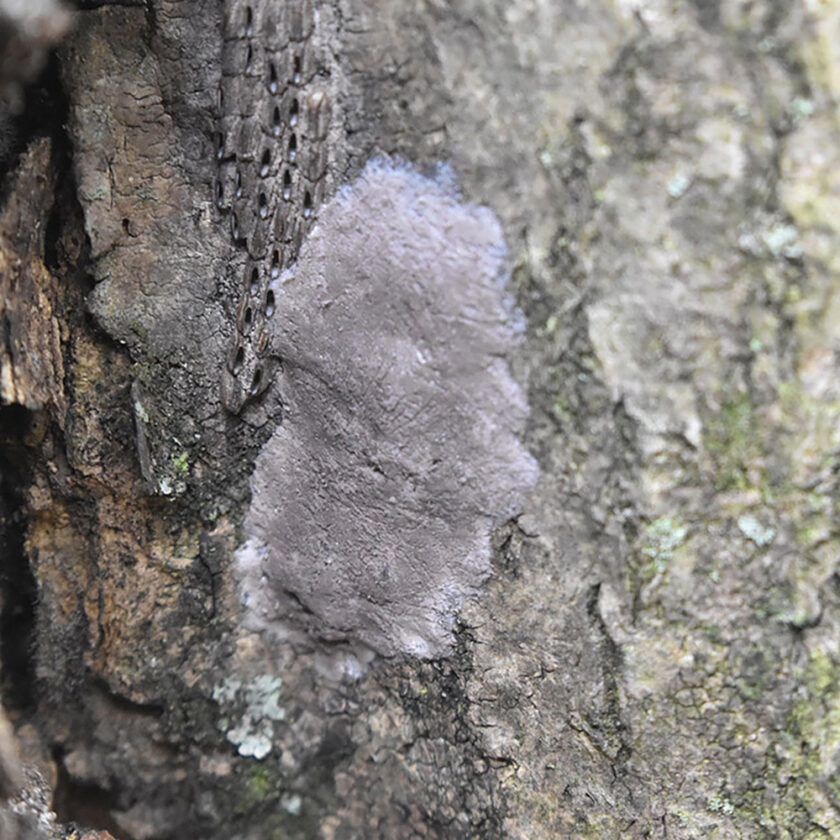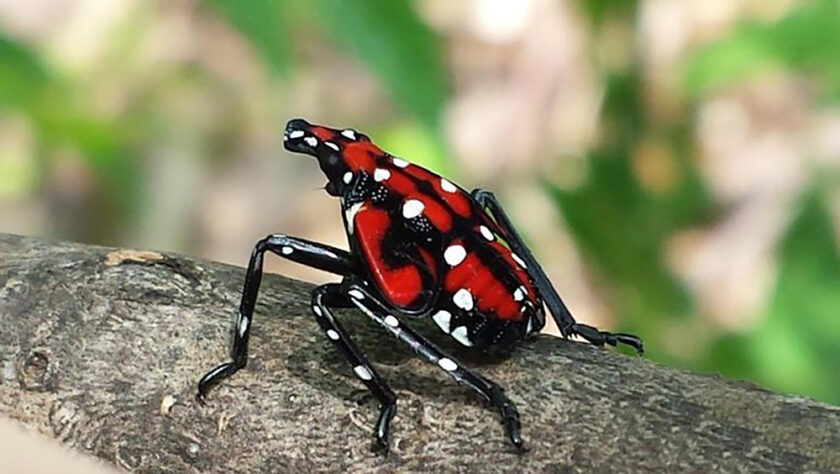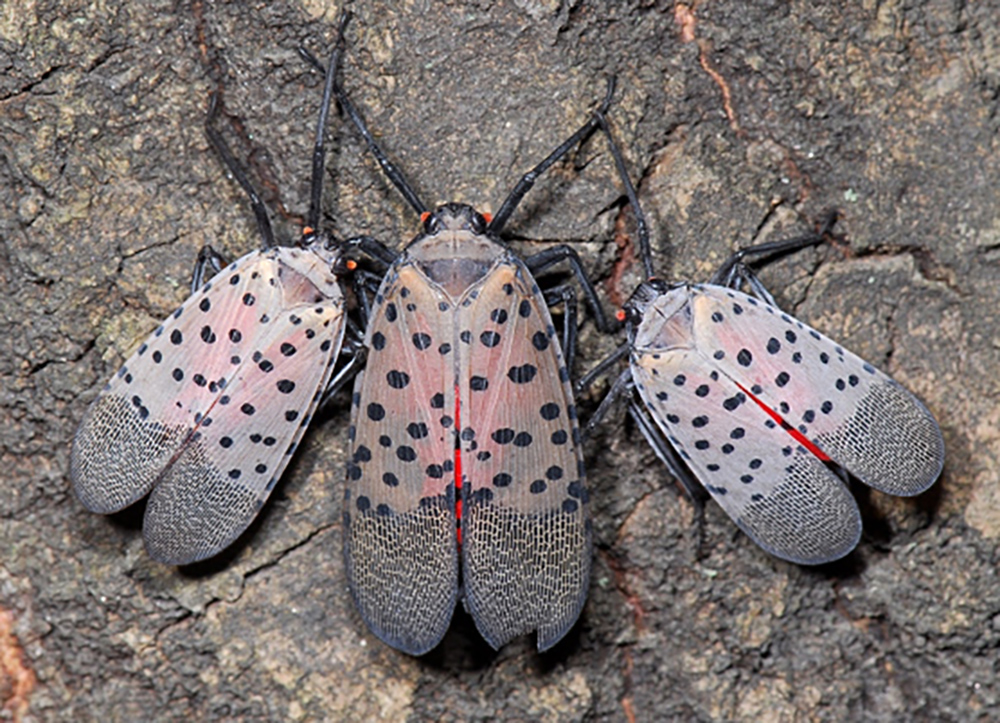By James FitzPatrick
Contributing Writer
New Jersey is being invaded and residents have been called upon to fight back.
On June 9, the New Jersey Department of Agriculture launched a campaign urging the public to do its part to slow the spread of the spotted lanternfly. Residents are being urged to “stomp out” the insidious creatures by killing them on sight before they do more damage to trees and crops.
The state has created badbug.nj.gov to educate the public on what’s at stake, what to do and how they can report them. The site teaches what the bugs look like, where to look for them and how to contain the sap-sucking bugs.
The spotted lanternfly, a native of Asia, does its damage by sucking the sap out of plants and trees, depriving their hosts of the main product of photosynthesis. Take too much sap away and plants may starve.

While spotted lanternflies or SLF have a favorite food called the tree of heaven, another non-native species from Asia, it can suck the sap of about 70 other plant species.
“SLF can feed on the sap of many important native plant species, but mainly impacts woody plants, shrub trees and some vines,” said Matthew G. Olson, Ph.D., assistant professor of forestry at Stockton University. “Grape species are susceptible, which has implications for viticulture and the wine industry.”
The spotted lanternfly is already here and hatched, so the key strategy now is containment. That’s where education comes in. Vigilance and adhering to the state’s SLF quarantine can stop the problem from getting worse by preventing them from being vehicle “hitchhikers.”
Thirteen counties where established SLF populations have been identified have been placed under quarantine. These include Burlington, Camden, Essex, Gloucester, Hunterdon, Mercer, Middlesex, Monmouth, Morris, Salem, Somerset, Warren and Union counties.
“Inspecting your vehicles, trailers, or any outdoor items before you move around or out of a quarantine zone is important,” the NJDA website states. “If possible, don’t park under tree lines and keep windows rolled up when parking your vehicle. Familiarize yourself with the life stages of the insect and when in the season to look for them.”
Businesses and governments moving vehicles between quarantine areas must go a step further and are required to receive state certification, demonstrating that their personnel are trained in best practices for keeping them under control.
“Quarantine compliance will reduce the spread of SLF to new areas and counties, thereby protecting New Jersey resources including forests and agriculture,” according to NJDA.
The only county where established spotted lanternfly populations have not been detected is Cape May County.
“Cape May has no established populations that I know of,” said George C. Hamilton, Ph.D., director of the graduate program in entomology at Rutgers University. “Right now, hitchhikers are the only ones being found.
“That may change this year,” Hamilton told Shore Local News. “They are established in Atlantic County.”
Olson has seen the bugs in action on the Stockton’s Galloway campus, and he doesn’t like what he sees.

“The SLF has been “spotted” on Stockton University’s main campus. I help oversee the campus arboretum and SLF has been detected on some of our living collections,” he said. “I’m very concerned. The sustainability farm is next to the arboretum and farm managers are concerned, too.”
So what do they look like?
After hatching in May, SLF are in the nymph stage. They start very small at about a few millimeters to a quarter inch as black with white dots. They stay in this general appearance into July when they turn red with white dots and are about a half inch long.
At full maturity in mid-late August, they have wings, gray with black dots and they’re in the egg-laying stage.
It’s also when they’re most harmful.
“They do the most damage as adults,” Hamilton said. “They will begin appearing at the end of July and will be around until cold weather sets in in October or November.”
Egg masses are about one inch long. They can be found on anything left outside. Most are on trees about 10 feet above the ground.
Fresh egg masses have a gray, mud-like coating. Older ones have a cracked, tan coating. Residents are urged to destroy them when discovered.
While the adults have wings and can fly, they walk more than fly. Their wings are closed most of the time. They hatch the following spring.
Since it made its first United States appearance in Berks County, Pa., in 2014, scientists have been tracking the advance of the native Asian insect. China, India and India are its customary stomping grounds.
Its favorite host plant, the tree of heaven, is also a China native.
In 2018 the SLF was first seen in New Jersey and has continued to spread, reaching Connecticut, Delaware, Indiana, Maryland, Massachusetts, New York, Ohio, Virginia and West Virginia.
Hamilton said because the lanternflies spread by attaching to vehicles, summer visitors pose a potential risk of introducing them to new areas.
“Depending on where visitors come from, it could be high,” he said of the risk. “Especially if they come from a quarantined area and don’t do vehicle checks.
Lanternflies for the most part do not kill their hosts, but they do cause damage, weakening hosts and making them more susceptible to disease and other parasites. They also leave behind a sticky mess called honeydew which encourages the growth of a sooty mold and can attract other pests.
“When the SLF congregate in large numbers on a single plant, they can siphon so much sap it can starve the host plant,” said Stockton’s Olson. “This stress to the host plant can slow plant growth, disrupt important life stages (e.g. reproduction), and elevate the risk of mortality. There’s also evidence that the waste excreted by SLF, honeydew, can have negative effects on the host.
One bit of good news is that SLF don’t ravage trees and forests the way other pests have.
Unlike spongy moth outbreaks (what used to be called gypsy moths) SLF is a sap sucker whereas spongy moth is a defoliator.
“(The spongy moth) can defoliate vast patches of woods in a single outbreak, which can take multiple years to play out,” Olson said. “Decades of periodic spongy moth outbreaks have caused significant mortality, especially the oaks.
“SLF has been observed on many flowering trees, oaks, birches, maples, and walnuts, which may cause enough stress to kill some trees, but nothing on the scale we see with spongy moth. However, the SLF is still fairly new so we’ll have to keep studying it to ascertain its longer term impact.”
The bottomline is that we can all do our part by reporting them and destroying them.
You can start by inspecting your vehicles closely, especially when driving in and out of Cape May County.










